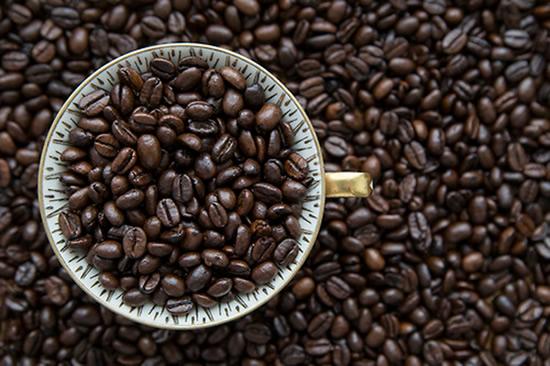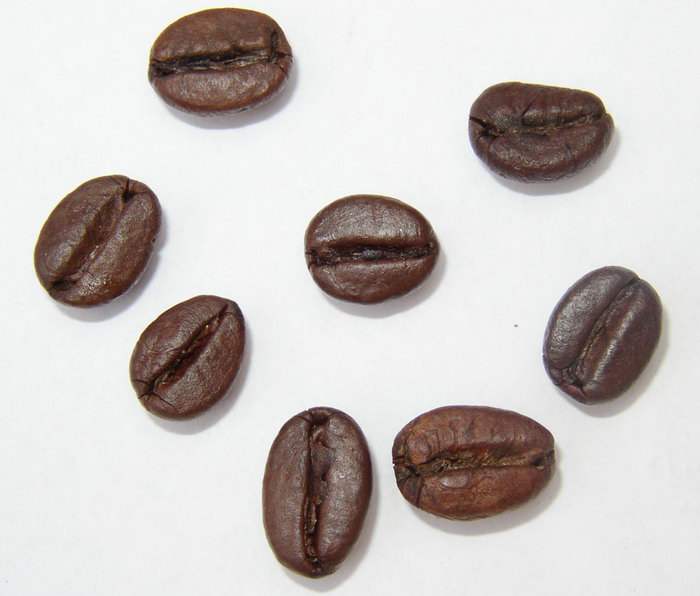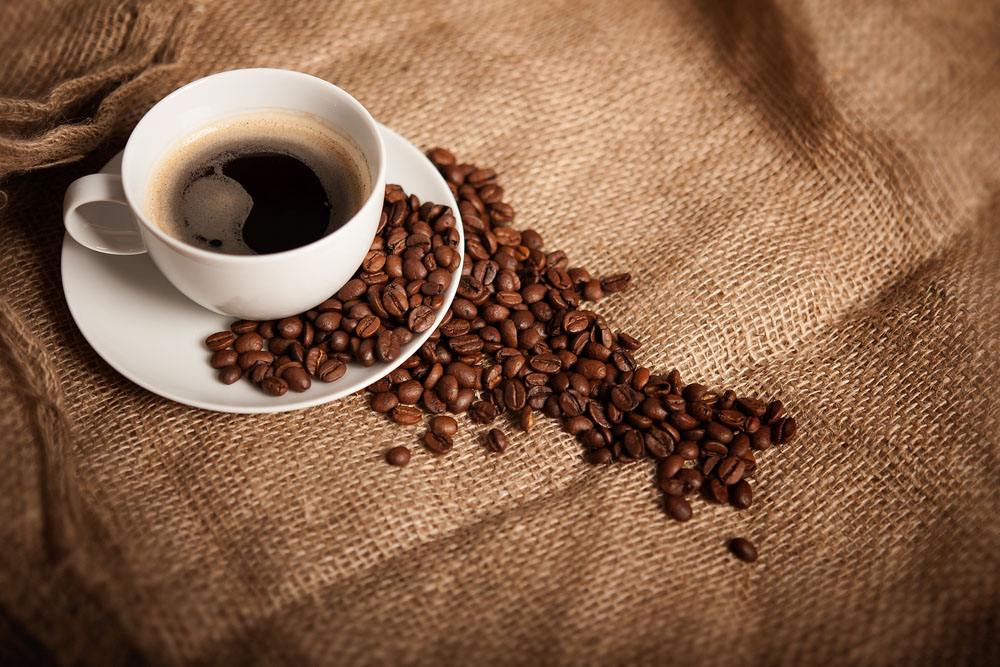Ethiopian coffee beans characteristics, Ethiopian coffee grades
Pay attention to coffee reviews (Weixin Official Accounts vdailycom ) and find a beautiful cafe to open your own shop
Ethiopian coffee beans are divided into five grades. The first and second stages are water-washed beans. Grade1 means 0~3 defective beans per 300 g of raw beans;Grade2 means 4~12 defective beans per 300 g. Grade 1 washed beans are extremely rare and generally difficult to buy. At present, all washed beans exported from Ethiopia are Grade2. The quality of sun-cured beans is ranked as Grade3, Grade4 or Grade5. Although Grade4 has significantly fewer defective beans than Grade5, coffee farmers claim that in order to save taxes on exports, they often lower the Grade4 to Grade5 to save money. This may just be a marketing ploy, but in fact Grade5 is not as good as Grade 4.

Ethiopia's beans are easy to identify, most of the beans are small and thin pointed long beans, so-called 'longberry', and often mixed with small oval short beans, so-called' shortberry', which look different in size and shape. Most commercial Grade4 or Grade5 beans are a mixture of hundreds of different seeds from each region, so the phase imbalance is most obvious and it is not easy to bake evenly.
Even the official Ethiopian research unit cannot say how many Arabicans there are in Ethiopia. Coffee cooperatives on one mountain certainly grow different varieties than those on another, and even small farmers in the same area grow different varieties of coffee. Some estimate that there are at least 2,000 varieties of Ethiopian coffee, and there are even more than 4,500 varieties. Ethiopian beans appear to be a bit malnourished compared to the fat bodies of Bourbon 'SL28', the dominant variety in Kenya to the south, or the Central and South American and Asian tibeka. But "beans" can not be judged by appearance, Ethiopian coffee citrus aroma can be called the world's best, whether instant coffee or freshly ground coffee, extraction on the smell of orange or lemon fragrance. On the palate, it has a rich floral, fruity and sour aroma that is characteristic of Ethiopia, but the body or consistency is slightly poor. The biggest drawback is that it is easy to bake unevenly, especially sun beans. Even the best Grade3 Harald sun-baked beans often show uneven color, which is the biggest defect of Ethiopian beans, but fortunately it does not affect its good flavor. For coffee fans, don't care how the beans look, the most important thing is to drink. Ethiopian washed beans are much more stable than sun-dried beans, whose flavor fluctuates greatly from year to year, so be sure to cup them several times before buying them in large quantities. Good sun-baked beans have a much deeper flavor than washed beans, but mishandled sun-baked beans are sure to be speechless, as many coffee fans say.
Ethiopian coffee grades:
Ethiopia washed coffee yejia sherfi G1 G2
The highest grades of Yirgacheffe, Sidamo are Grade II and Grade III ( G2, G3).
Most of the sun-processed coffee in eastern Ethiopia is grade 4 or grade 5 (G4, G5).
In many cases, fourth-grade coffee is labeled as five-grade in order to reduce taxes. The classification is now less uniform and somewhat chaotic, because there are also Grand G2 and Grand G2, but Harar is the highest grade (G4).
Ethiopian coffee producing areas are Sidamo, Harrar and Yirgacheffe. Sidamo and Harrar are provinces and divisions. Sidamo is located in the south of Ethiopia adjacent to Kenya. Harrar borders Somalia in the east of Ethiopia. Although Yirgacheffe is a small area in Sidamo region, due to soil composition and water content, its coffee production is considered to be the best in Ethiopia.
In the West, Ethiopian coffee is marketed as Yirgacheffee, Sidamo and Harrar.
In the fine coffee field, there are five other small places for coffee, namely Limmu, Djimmah, Lekempti, Bebeka and Wolega. The most common coffee is either Sidamo or Harrar coffee.
Harar Coffee is produced in the eastern highlands of Ethiopia. It is medium size, greenish yellow, medium acidity, full bodied and has typical mocha flavor. It is one of the most famous coffees in the world.
Wollega (Nekempte) coffee is produced in western Ethiopia. It is medium to large in bean shape and is famous for its rich fruit flavor. Green, brown color, acidity and body are good. It can be made into a combination or a single item.
Limu Coffee is famous for its spicy and Winnie flavor and is popular in Europe and America. Acidity, good body, washed Lim coffee is also a fine coffee darling. Bean-shaped medium, green-blue, mostly round.
Sidama Coffee (Sidama Coffee) bean shape medium, green gray, Sidamo washed coffee to taste, flavor balance for the characteristics, known as sweet coffee (sweet coffee), fine acidity, good body, produced in southern Ethiopia, can be combined with fine products.
Yirgacheffe Coffee has a strong floral flavor.
Washed coffee is one of the world's best high-quality coffee, soft acidity, rich body. Top and Bebeka coffees, low in acidity but high in body, are indispensable members of the blend coffee.
Important Notice :
前街咖啡 FrontStreet Coffee has moved to new addredd:
FrontStreet Coffee Address: 315,Donghua East Road,GuangZhou
Tel:020 38364473
- Prev

The production of Ethiopian coffee, the introduction of Ethiopian coffee
Following Kaiping (Wechat official account vdailycom) found that Beautiful Cafe opened a small shop of its own. There are more than 140 varieties of coffee in Ethiopia in East Africa, which means the land inhabited by sun-tanned people in ancient Greek. Ethiopia's unique cultural tradition, spectacular scenery, pleasant climate, rich animal and plant resources, and important places of interest
- Next

The characteristics of Jamaican coffee and the description of Jamaican coffee flavor
Following caf é (Wechat official account vdailycom) found that Beautiful Cafe opened a small shop of its own almost anyone who has heard of Jamaica Blue Mountain Coffee knows it is the most expensive coffee in the world, but not everyone knows why. Like Rolls-Royce cars and Stradivari violins (Stradivarius Violin)
Related
- Detailed explanation of Jadeite planting Land in Panamanian Jadeite Manor introduction to the grading system of Jadeite competitive bidding, Red bid, Green bid and Rose Summer
- Story of Coffee planting in Brenka region of Costa Rica Stonehenge Manor anaerobic heavy honey treatment of flavor mouth
- What's on the barrel of Blue Mountain Coffee beans?
- Can American coffee also pull flowers? How to use hot American style to pull out a good-looking pattern?
- Can you make a cold extract with coffee beans? What is the right proportion for cold-extracted coffee formula?
- Indonesian PWN Gold Mandrine Coffee Origin Features Flavor How to Chong? Mandolin coffee is American.
- A brief introduction to the flavor characteristics of Brazilian yellow bourbon coffee beans
- What is the effect of different water quality on the flavor of cold-extracted coffee? What kind of water is best for brewing coffee?
- Why do you think of Rose Summer whenever you mention Panamanian coffee?
- Introduction to the characteristics of authentic blue mountain coffee bean producing areas? What is the CIB Coffee Authority in Jamaica?

